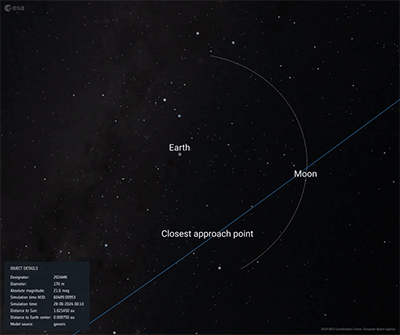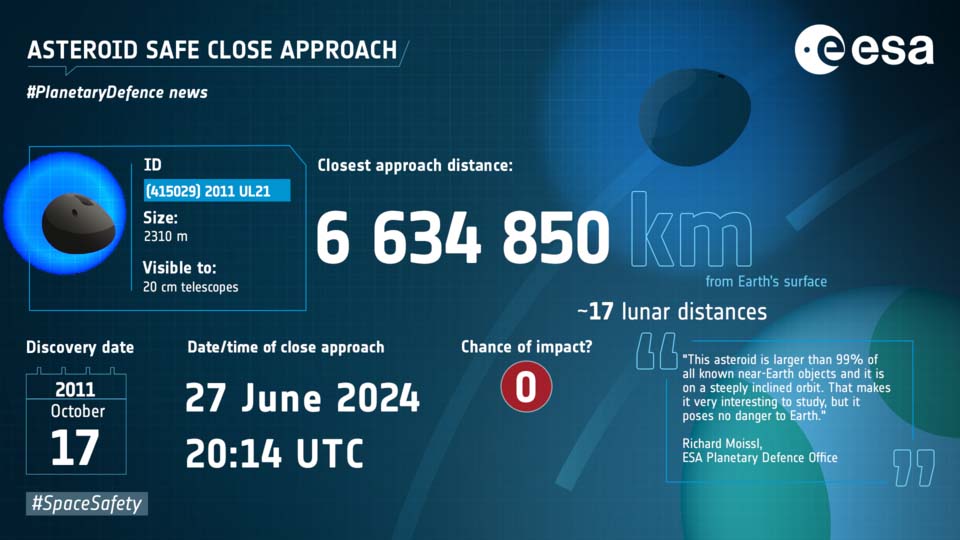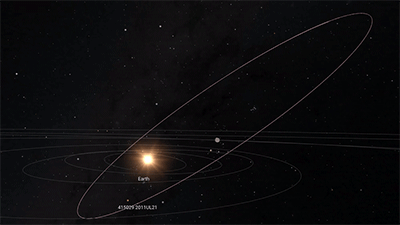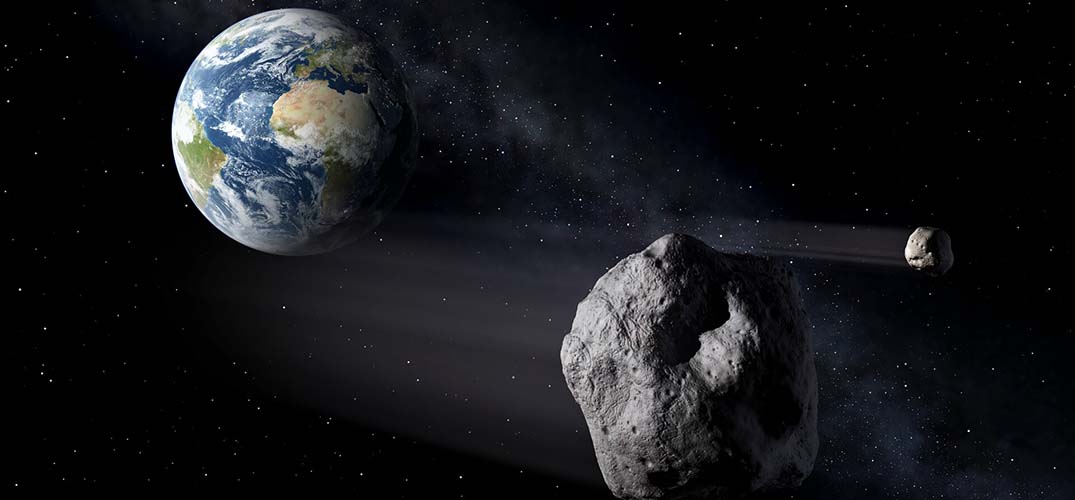Two large asteroids will safely pass Earth this week, a rare occurrence – and appropriate in that Asteroid Day takes place on 30 June.
Neither poses any risk to our planet, but one of them was only discovered a week ago, highlighting the need to continue improving our ability to detect potentially hazardous objects in our cosmic neighbourhood.
Asteroid 2024 MK is between 120m and 260 m in size and was discovered on 16 June 2024. The asteroid will fly past Earth on 29 June.

 2024 MK is large for a near-Earth object (NEO) and will pass within 290 000 km of Earth’s surface – roughly 75% of the distance between Earth and the Moon.
2024 MK is large for a near-Earth object (NEO) and will pass within 290 000 km of Earth’s surface – roughly 75% of the distance between Earth and the Moon.
There is no risk of 2024 MK impacting Earth. However, an asteroid this size would cause considerable damage if it did, so its discovery just one week before it flies past our planet highlights the ongoing need to improve our ability to detect and monitor potentially hazardous near-Earth objects (NEOs).
Due to its size and proximity, 2024 MK will be observable in clear dark skies on 29 June using a small telescope for amateur astronomers in some parts of the world. Plan your observations using ESA’s NEO toolkit.

Asteroid (415029) 2011 UL21 is the larger of the week’s visitors. At 2310 m across, this asteroid is larger than 99% of all known near-Earth objects. However, it won’t come anywhere near as close to Earth. At its closest point on 27 June, it will still be more than 17 times as far away as the Moon.
 This asteroid’s orbit around the Sun is steeply inclined, which is unusual for such a large object. Most large objects in the Solar System, including planets and asteroids, orbit the Sun in or close to the equatorial plane.
This asteroid’s orbit around the Sun is steeply inclined, which is unusual for such a large object. Most large objects in the Solar System, including planets and asteroids, orbit the Sun in or close to the equatorial plane.
This could be the result of gravitational interactions with a large planet like Jupiter. Jupiter can deflect previously safe asteroids inwards towards Earth, so understanding this process is important.
Asteroid Day 2024
The impact craters scarring Earth’s surface are testament to how asteroids have greatly influenced our planet’s history and development.
The UN-endorsed Asteroid Day commemorates the largest observed asteroid strike in recorded history – the 1908 airburst above Tunguska in largely deserted Siberia, which felled around 80-million trees.
This represented a lucky escape for Europe: it happened just a short rotation of Earth away from affecting the continent’s more heavily populated regions.
Over the last two decades, the European Space Agency (ESA) has been performing detection and analysis of potentially hazardous NEOs. There are an estimated 5-million NEOs out there larger than 20m – the threshold above which an impact could cause damage on the ground.
Stunning meteor captured by ESA’s fireball camera in Cáceres, Spain

